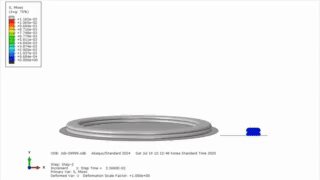- 3D printed concrete
3D printed concrete is emerging as one of the most transformative technologies in modern construction. By combining automated fabrication with innovative material design, it offers new possibilities for efficiency, sustainability, and structural performance. Our research takes a comprehensive approach to this field, linking material science, structural engineering, and digital construction methods.
At the material level, we investigate how additives such as fibers, supplementary cementitious materials, and chemical admixtures can improve printability, control shrinkage, and enhance early-age strength. Optimizing these mixtures is essential for achieving both reliable extrusion and durable structures.
From a structural perspective, we conduct experiments and numerical modeling to evaluate mechanical properties, interlayer bonding, fracture mechanisms, and long-term durability. Simulation tools like finite element analysis are integrated with experimental results to predict buildability limits and ensure safety under different loading conditions.

Sustainability remains a core driver of our work. We explore the use of recycled aggregates, industrial by-products, and even extraterrestrial resources such as lunar regolith, aiming to reduce carbon emissions while expanding the scope of construction technologies.
Our ultimate vision is to merge digital design, automated manufacturing, and eco-friendly materials to create intelligent, resilient, and sustainable construction systems for both Earth and space applications.
- Numerical simulation 3DPC
Early-age 3D printed concrete structures are inherently unstable because their low initial strength makes freshly deposited layers vulnerable to deformation and collapse before setting. After extrusion, the material exhibits limited load-bearing capacity and is highly sensitive to accumulated stresses from subsequent layers.

To address this challenge, we apply a quantitative simulation framework that predicts when and how failures initiate and propagate during printing. By reproducing the failure process virtually, the framework allows us to evaluate buildability in advance,
define safe operating windows and systematically optimize printing protocols. This simulation-driven approach ultimately transforms failure prediction into practical guidance for 3D concrete printing process control and design, enabling more reliable and automated construction with fresh concrete.